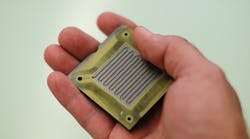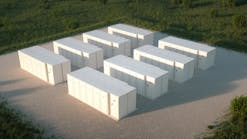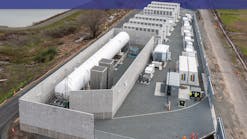I was a co-op student at Georgia Tech working at the Georgia Power Research Center back in the 70s. The power company was installing a fuel cell, and I was intrigued. I even drove out to see how much (little) space it took up and much (little) noise it made.
So when I went back to school, I researched the present state-of-the-art in fuel cell technology for my mechanical engineering senior project. The most promising technologies at the time were molten carbonate and solid oxide. The technologies were not ready for prime time as the systems to strip hydrogen from natural gas were not robust and the membranes continued to get contaminated, adversely affecting the efficiencies of the devices. And there were other issues, which is pretty much assured for all emerging technologies.
Fast-forward to early 2002. I was working with my buddy Jim Berard, who was chairman of the local chapter of IEEE. He talked me into helping him put together a conference here in Kansas City on advanced technologies. Jim had discovered that Omaha Public Power District had installed a 200 kW natural gas-fired IFC fuel cell at the Omaha Zoo to generate electricity and heated water. The fuel cell, installed in 2001, ran until it was taken off line in 2008. The effort was subsidized by a DOE Climate Change grant. We learned through this demonstration project that the fuel cell would trip out whenever there were any system disturbances. So although the fuel cell was generating the desired output, it suffered a lot of downtime and required tender loving care to keep it operating.
The Technologies
You might remember when the Proton Exchange Membrane (PEM)-based fuel cells came onto the market. With lower operating temperatures and higher energy density, it was hoped these devices plants would power the next generation of vehicles.
In 2007, Honda came out with the industry’s first production fuel cell car, the FCX Clarity. Over the next six or seven years, Mercedes, Hyundai and Toyota followed with fuel cell powered cars of their own. Those of us in the power industry were hoping that if the transportation industry provided a big push, maybe the power industry could benefit from advances in fuel cell technology.
Where Are We Now?
We have at least four companies active in providing stationary fuel cells powered by natural gas. Plug Power, which uses PEM technology, came about in 1997 as a joint venture between DTE Energy and Mechanical Technology Inc. The company went public in 2002. I recall utilities at the time were considering that these Plug Power devices might take the place of batteries in substations. Plug Power devices tend to be installed on commercial, residential or university systems.
Bloom Energy, initially named Ion America, was launched in 2001 and is based on solid-oxide technology. In early 2006 Bloom shipped its first 5kW field trial unit to the University of Tennessee, Chattanooga.
ConEd is now working with its customers to use Bloom Energy fuel cells as a key component of its Brooklyn-Queens Demand Management Program. A total of 6100 kW of baseload power from fuel cells have been located at six customer sites within the BQDM territory.
Fuel Cell Energy offers a molten carbonate fuel cell that produces both electricity and process heat. FCE has utility systems installed at Dominion, Avangrid, PG&E, SCE, Southern Company, EON and ewz and Korea Hydro. Doosan Fuel Cell is PAFC-based and runs on natural gas. Doosan was founded in 2014 following the acquisition of the assets and intellectual property of UTC Power (a division of United Technologies). It focuses on larger capacity installations.
I initially thought that a fuel cell would essentially produce no carbon and that is the case if hydrogen is the source fuel. But that is not the case if you have to free hydrogen from natural gas because carbon is a byproduct. Still, the carbon emissions are much lower than that from coal-fired generation.
Pragmatic Solution
Doosan and Bloom are active in South Korea, which is the biggest user of grid-scale fuel cells. By 2017, South Korea had the worst air quality of the 35 OECD ‘developed’ nations. The country is seeking to improve its environmental footprint. South Korea has already deployed more than 300 MW of fuel cell systems and now plans to increase that total to 600 MW by 2022. Because of the population density and mountainous terrain in South Korea, fuel cells – with their smaller footprint and 24/7 availability – have proven to be a more pragmatic solution than renewables.
So that brings me back to my original question: What about fuel cells? Because fuel cells provide 24/7 power and some provide excess heat, I expect they will compete with gas-fired turbines and combined heat and power.
Longer term, looking out 20 to 30 years, I see more regulators and legislators and even utilities and their customers commit to be carbon neutral. But at present, natural gas is plentiful, and fuel cells will play a role in the energy mix as we transition to a more distributed future.


